This excerpt is taken from " Chinese agricultural technology transfer to African typical dry areas: practice and experience" by Qiuxia Meng et al. Published in Frontiers of Agriculture Science and Engineering, 2020, 7(4): 440‒454. https://journal.hep.com.cn/fase/EN/10.15302/J-FASE-2020353
Abstract
Africa has experienced increasing aridity and higher frequency of droughts due to climate change during the half past century with possible adverse effects on agricultural production, especially in dry areas with low rainfall. Under the auspices of the Africa Water Action Program between the Chinese Ministry of Science and Technology (MOST) and the United Nations Environment Program (UNEP), the Institute of Agricultural Environment and Resources, Shanxi Academy of Agricultural Sciences (SAAS-IAER) worked closely with domestic and overseas partners on technology transfer in Morocco, Zambia, Egypt, Niger and Ethiopia from 2008 to 2013. A drought early warning system has been established and validated, and drought adaptation technologies have been trialed, modified, demonstrated and extended in African countries, and this shows great potential to increase crop production, water and fertilizer use efficiency and desert control in rainfed areas of Africa. The project has continued for six years and is a successful case of technology transfer and capacity building in Africa. The knowledge and experience gained will be useful to researchers, technicians, aid agencies and policy makers who work on agricultural technology transfer for in dry areas of Africa.
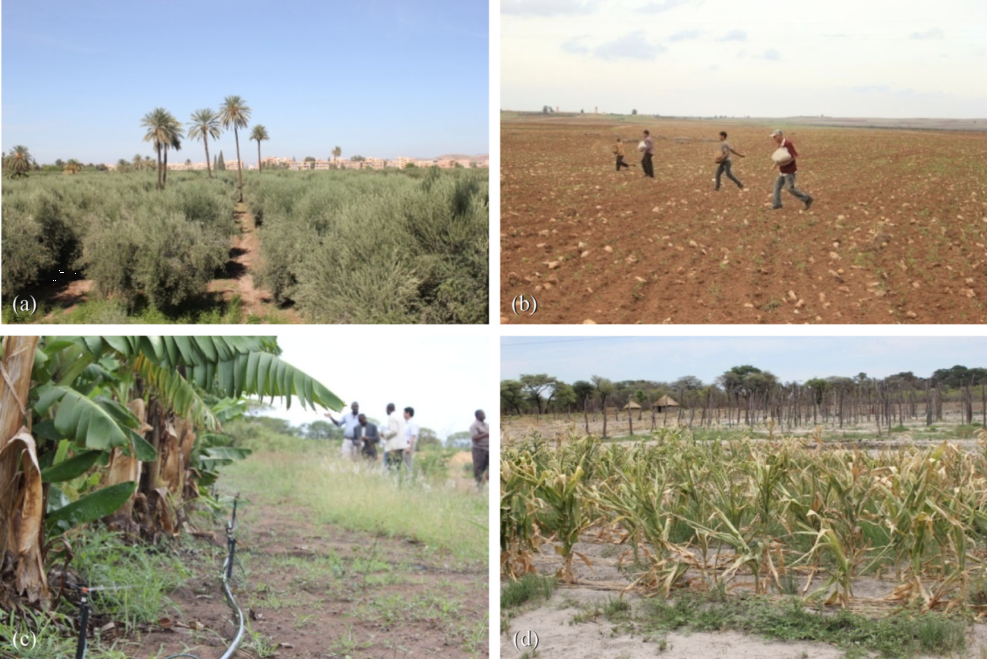
Africa Water Action: A China-UNEP-Africa cooperative environment program
A memorandum of cooperation was initiated between the Chinese Ministry of Science and Technology (MOST) and the United Nations Environment Program (UNEP) in November 2007. It confirmed that both parties would provide capacity building and technical support to African countries in environment-related areas including disaster alleviation and climate adaptation, sustainable use of energy, information exchange on energy saving and emission reduction, biodiversity conservation, and other areas related to environmental protection and improvement. The Africa Environmental Technology and Institutional Cooperation and Exchange Framework memorandum of understanding was formally signed between MOST and UNEP one year later.
The Africa Water Action, the China-UNEP-Africa Cooperation Program on the Environment, funded by MOST, was jointly initiated by UNEP and MOST in 2008. All projects were identified based on the UNEP Program of Work (PoW) and the needs of the African countries. The main objective was oriented toward enhancing African capacities to address environmental challenges facing the continent through experience exchange, technical transfer and information sharing with the Chinese scientists. Objectives of the projects were accomplished through training workshops, a visiting scholar program and demonstration pilot projects. The projects were funded by MOST and jointly implemented by more than 20 Chinese and African universities, academic institutions and organizations under the overall coordination of the Regional Office for Africa (ROA) at UNEP.
Within this framework, SAAS-IAER was commissioned by the Department of International Cooperation, MOST, to undertake a fourth project titled “Cooperation in drought early warning systems and adaption technology in the drought regions of Africa” in phases I and II consecutively. SAAS-IAER and other domestic participants, Lanzhou University, Gansu Desert Control Research Institute, Northwest A&F University and Space Star Technology Co., Ltd., worked hand-in-glove with their African counterparts.
Aims of the project
The project “Cooperation on drought early warning system and adaption technology in the drought regions of Africa” aimed to: (1) establish drought early warning systems for typical regions of Africa and thus to enhance the drought prediction and early warning capabilities of African countries; (2) integrate the drought mitigation technologies well developed in China and establish demonstration sites for dryland farming technology in typical regions of Africa and thus improve the drought-resistance capability of crops and cushion the losses caused by drought in Africa; (3) provide training to technical staff and organize personnel communication and exchange and thus to promote capacity building of African researchers and technicians; and (4) enhance theoretical research capacity and technology adaptability in agroclimatic, hydrological, modelling and other related areas (drought and climate change). Eventually, mutual understanding and friendship between Chinese and African people and capacity building on drought early warning systems and adaption technology in the dry regions of Africa would be promoted.
Project implementation and outcomes
The project was conducted mainly in Morocco, Zambia, Ethiopia, Niger, and Egypt. Each of the four Chinese research institutions/universities was paired with one or two African country/countries based on the their research strengths and the African countries’ actual situation. Space Star Technology Co., Ltd. provided the data and technical support required. Cooperation agreements and memoranda of understanding were signed between the Chinese and African partners, respectively.
The researchers from China and Africa worked closely in field investigation and survey to identify the gaps between the current drought prediction/drought mitigation technologies and the actual demands in the African countries studied, and then established DEWS, introduced well-developed Chinese drought adaptation technologies to the African countries via the establishment of demonstration sites, developed water-conservation farming patterns adapted to Africa by rational integration and field trials of various drought mitigation technologies, and promoted capacity building by technical training and personnel exchange. Scaled-up application followed in terms of extension spots/farms, technical training and media publicity.
1. Field investigations and surveys
Understanding the climate, soil, actual farming systems and components, farmers’ capability to invest in crop subsystems, and farmers’ strategies to adapt to climate change, is necessary the identification of the transferable drought adaptation technologies to the project area. As a result, more than ten missions were organized to identify the actual technology demands and transferrable technologies to the cooperating African countries. These missions comprised researchers from China and their corresponding African partners, and they conducted investigations on climate, soil, desertification, farming system and the drought mitigation technologies in use with field observations, questionnaire surveys and interviews with local farmers and technicians. Documents and academic reports were also referred to. The results of the investigation and surveys were summarized in a series of reports written by the project members. Field investigation and surveys helped the project members to understand the actual situation of African agriculture and also provided opportunities for direct communication with local farmers, technicians and agricultural administrative officials and acquisition of valuable first-hand information. The information collected was incorporated with the Analytic Hierarchy Process (AHP) method in the selection of drought adaptation technologies transferred to African countries.
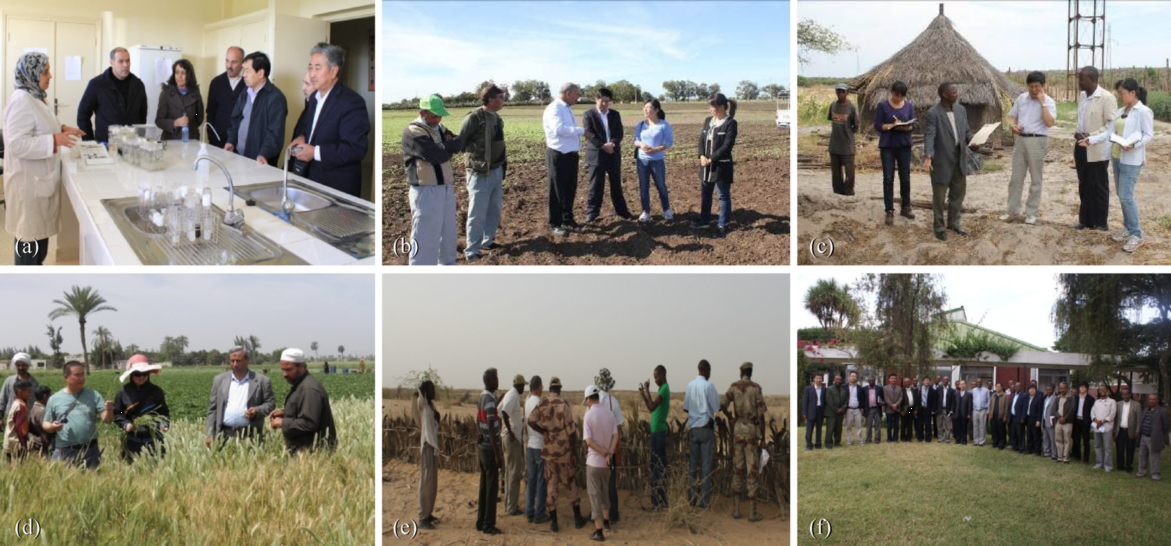
Field investigations and surveys in different African countries conducted by joint China-Africa missions.
2. Drought zoning and land use planning
Drought zoning of Ethiopia was accomplished by researchers from Lanzhou University. The eventual aim of Ethiopian agricultural drought zoning was to use and develop land in an effective, rational and scientific manner based on information on the current land use situation, usable resources, ecology and environment and socioeconomic conditions acquired during the investigation. The causes and current situation of desertification in Niger were studied by researchers from Gansu Desert Control Research Institute to provide a scientific basis for desert control, environmental protection and the sustainable development of the economy. The implementation of these tasks is summarized in the following Table.
Drought zoning and land use planning in the project
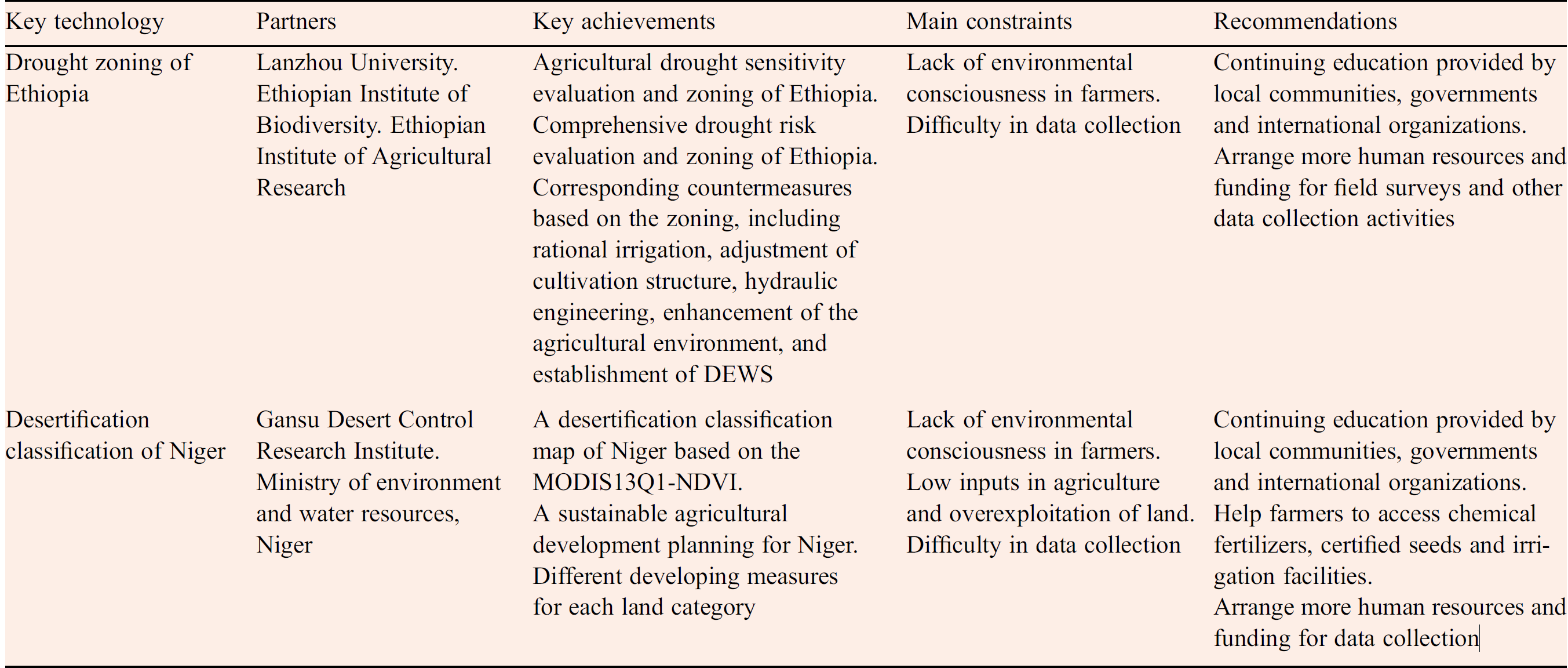
3. Construction of drought early warning system
The mobile versions of drought early warning software based on iPhone and iPad, tailored for African countries, were released in the project. The website versions of the drought early warning system and the drought early warning data integration platform were also finalized. The sensor data acquisition platform was preliminarily established and the agriculture production models for Ethiopia, Zambia, Morocco, and Niger preliminarily constructed. The drought early warning system was preliminarily extended and showcased in Morocco and Ethiopia, and the software was verified using actual measured data when the project closed. The DEWS serves two types of clients, i.e., mobile clients and web service clients. It uses a four-tiered architecture (Fig. 4). (1) An ecological monitoring and data collection system supported by a local GIS-based database and ecological sensor data; (2) a database integration system which can assimilate multi-source data for the simulation system; (3) an ecosystem process simulation system; and (4) an information distribution system which may be accessed through personal computers and mobile devices such as smart phones and tablets.
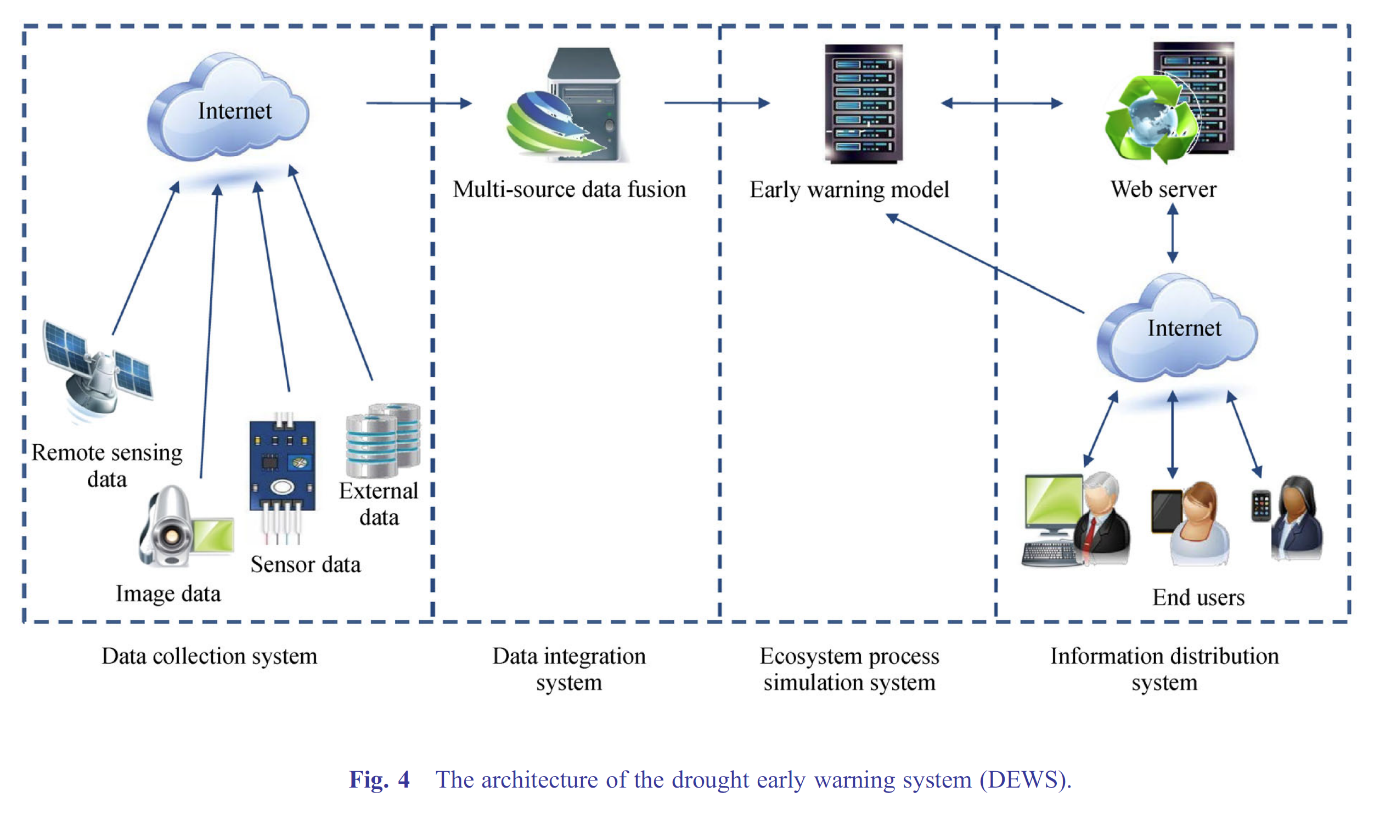
4. Technology demonstration, field trials and extension
With the joint efforts of the Chinese and African participants, demonstration sites of drought adaptation technology were established and field trials arranged in Morocco, Zambia, Egypt and Niger from 2011 to 2013. Settat Agricultural Research Center and Kenitra Agricultural Research Center, National Institute of Agronomic Research of Morocco (INRA, Morocco), Zambia Meteorological Department; the College of Agricultural Sciences of the University of Zambia; Suez Canal University of Egypt and the Ministry of Environment and Water Resources of Niger played important roles in the trials. The efforts made by the African partners were essential for the success of the technology demonstration and field trials because most of them were highly cooperative and informative. Local technicians and farmers showed great interest in the demonstrations and field trials and participated the hand-on training with great enthusiasm. Upon the completion of the experimentation and demonstration, researchers from universities and research institutions agreed to conduct further studies to adapt the technologies to the local production situation. In addition to the hand-on training, English copies of the operating specifications of the drought adaptation technologies were prepared and distributed to the African partners to ensure continuing application. The tested, demonstrated and extended drought adaptation technologies are listed in the following Table.
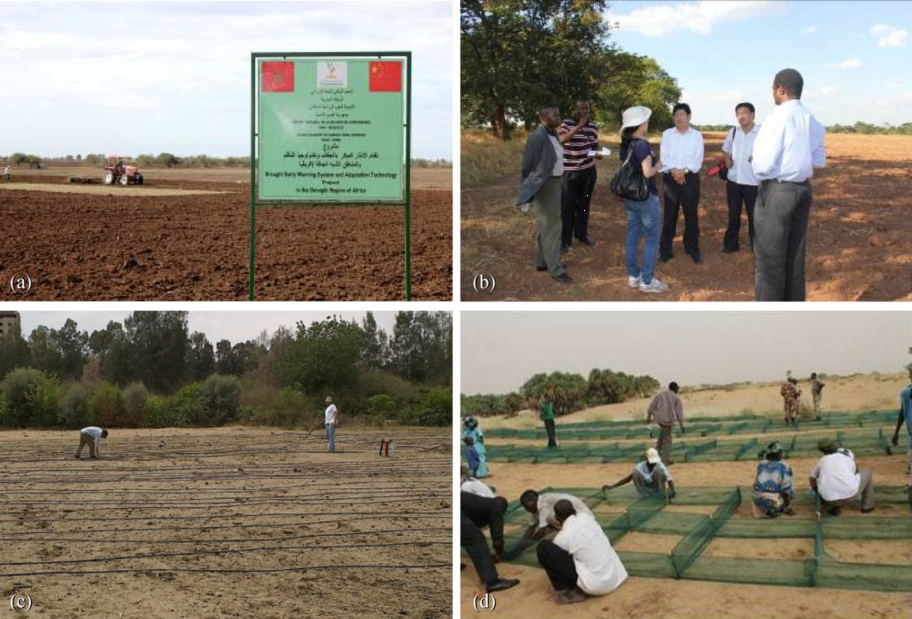
Demonstration sites in (a) Morocco (b) Zambia (c) Egypt and (d) Niger
Demonstrations, field trials and extension of drought adaptation technology in different African countries
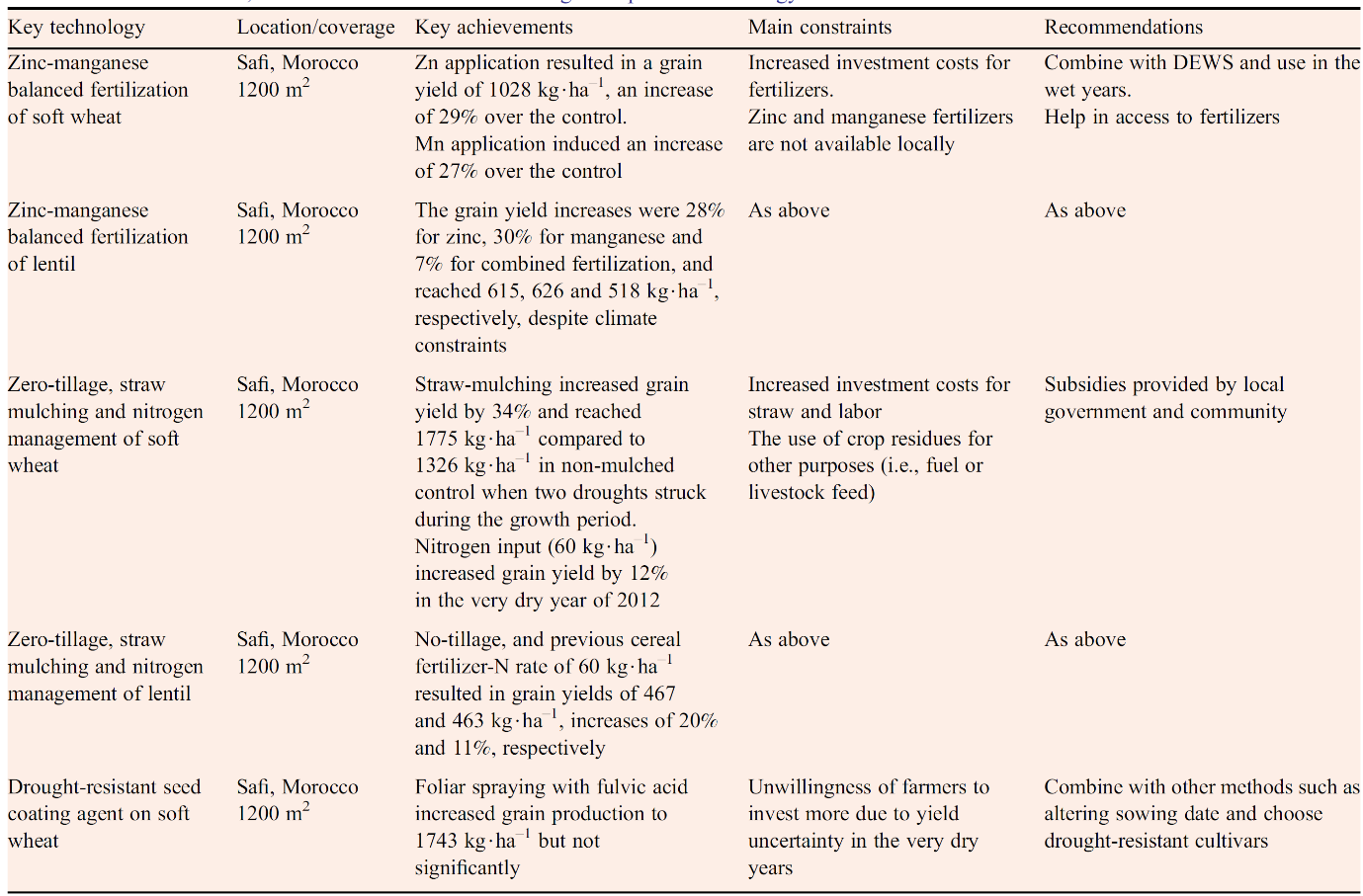
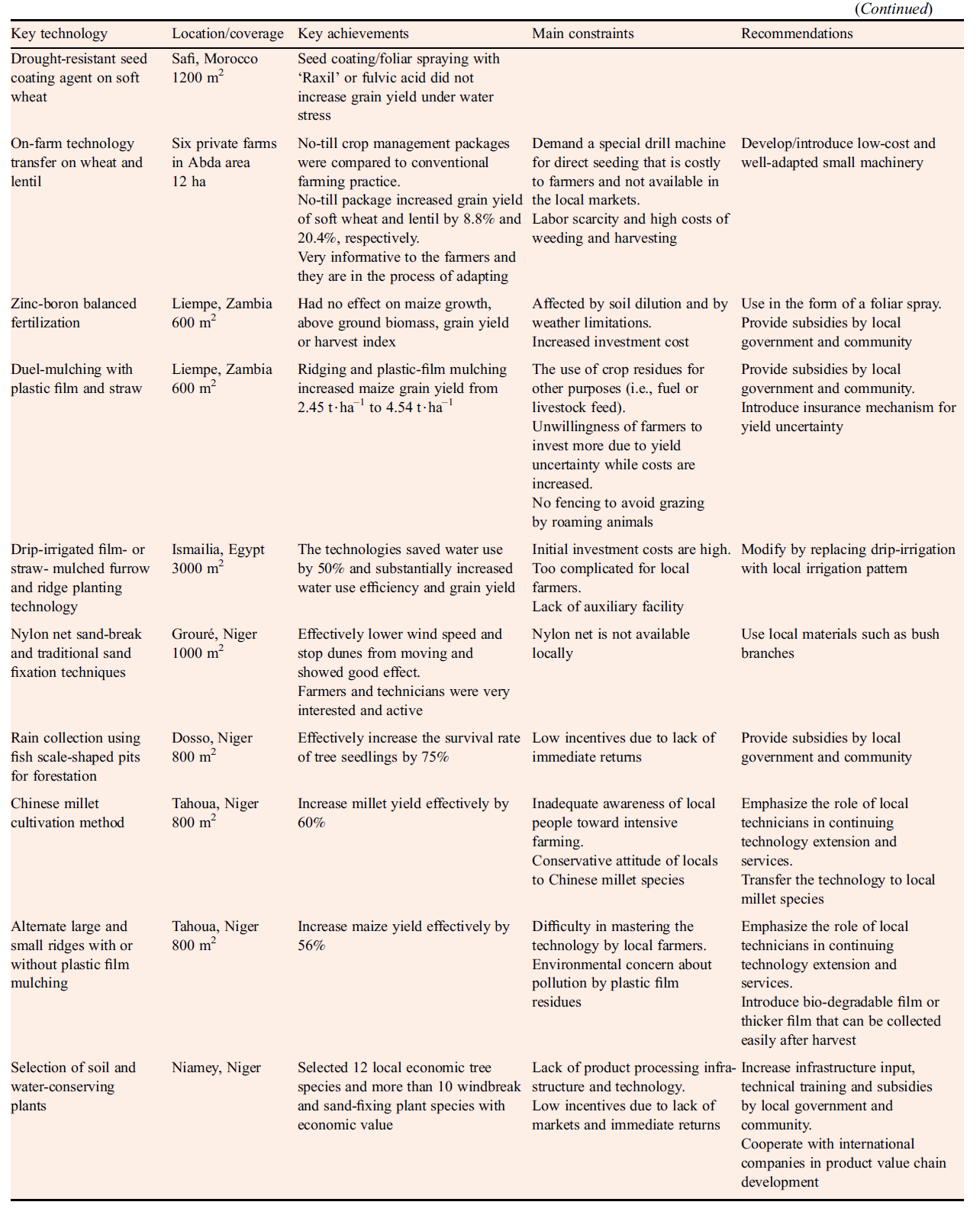
Category
Chinese Agricultural Technology Transfer to African Typical Dry Areas: Practice and Experience
Contributor
Chinese Agricultural Technology Transfer to African Typical Dry Areas: Practice and Experience
Country
Technical Solution

